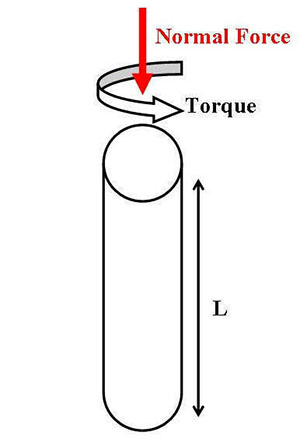Molecular Origins of Nonlinear Responses of Glassy Polymers
Anny Flory
Normal Force Response of Polymer Glasses
Anny Flory
The molecular origins of the nonlinear (finite) elasticity of cross linked rubber and the nonlinear viscoelastic response of polymer melts and solutions are well understood both fundamentally and in practical applications. On the other hand, the impact of molecular structure on the nonlinear viscoelastic (but sub-yield) behavior of glassy polymers has been little explored and no chemical structure theory is available to describe this behavior.

In this research we address this issue. In Particular, we take advantage of torsional measurements because, in order to keep the sample at constant length it is necessary to apply not only a torque but also a normal force and the combination of torque, normal force, and volume change during torsion provide more information about the material behavior than do other modes of deformation. Here, we investigate how the molecular mechanisms associated with the glass transition (Tg) and first sub-Tg relaxation (β transition) relate to the nonlinear viscoelastic behavior of glassy polymers with various chemical structures.
Funding
- Petroleum Research Fund
- National Science Foundation
